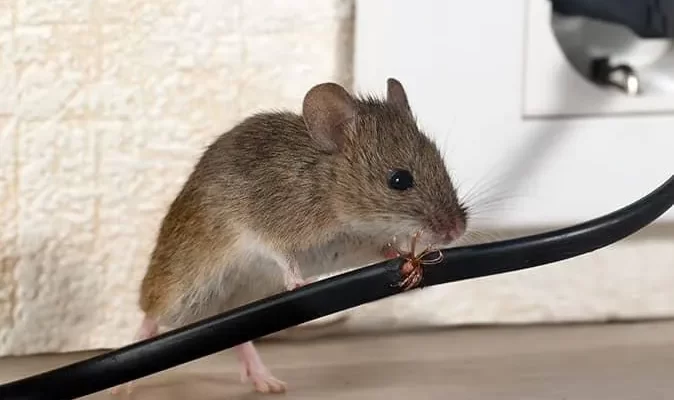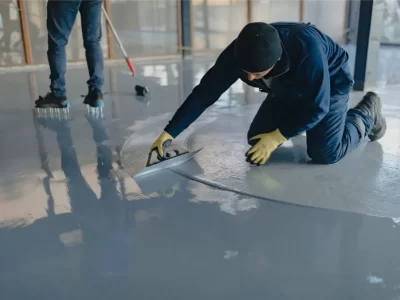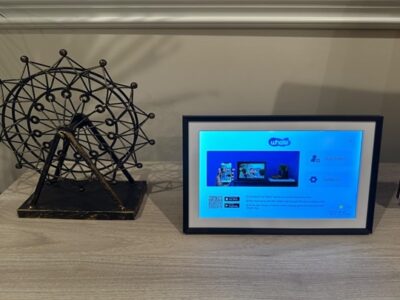Few things are more unsettling than discovering mice in your home. Whether it’s spotting beady eyes peering from beneath the refrigerator or hearing the scurrying sound of tiny feet across your floor, mice are notorious for causing both physical and psychological discomfort. In addition to the distress of sharing your living space with rodents, mice pose significant health risks and can cause substantial damage to your home.
Mice are known to carry diseases that can spread through direct contact, droppings, urine, or even through fleas and ticks that hitch a ride into your home. Additionally, they are infamous for chewing through electrical wires, insulation, and wood, which can lead to costly repairs and fire hazards. Given that mice reproduce rapidly, with females capable of having up to 10 litters per year, swift action is critical once you suspect a problem.
This guide outlines how to identify signs of a mouse infestation, effective methods to deal with these pests, and how a professional service like Terminix can help keep your home mouse-free.
Signs of a Mouse Infestation
If you suspect that you have mice in your home, there are several telltale signs that indicate an infestation. Common clues include:
- Droppings: Mouse droppings are small, dark, and resemble grains of rice. They are often found near food sources, along baseboards, and in hidden corners of the house.
- Nests: Mice build nests from shredded paper, insulation, fabric, or other soft materials. These nests are usually hidden in dark, quiet areas, such as behind appliances or inside walls.
- Gnawed Surfaces: Mice have sharp teeth and will chew through wood, plastic, and even electrical wires. Check for gnaw marks on baseboards, furniture, or around food packaging.
- Sounds: If you hear scratching or squeaking noises, especially at night, it may be a sign that mice are active in your home.
- Visible Mice: If you spot one or more mice, it’s a strong indication that you have an infestation.
The faster you identify these signs and take action, the better you can prevent the situation from worsening.
How to Get Rid of Mice in Your Home
Once you’ve confirmed that mice are present, it’s time to take action. You have several options for dealing with a mouse infestation, from DIY methods to professional pest control services.
1. Seal Entry Points
One of the most effective long-term solutions to a mouse problem is preventing their entry into your home. Mice can fit through openings as small as a quarter-inch wide, so sealing cracks, gaps, and holes around the foundation, walls, and windows is essential.
Use materials that mice can’t chew through, such as steel wool, wire mesh, or cement. For doors and windows, consider weather stripping to seal gaps and ensure door sweeps make a tight seal when closed. Check around utility pipes and vents, as these can also be entry points for mice.
2. Set Mouse Traps
Mouse traps are a traditional but effective method for controlling an infestation. While snap traps are popular, you may need to use several traps to catch multiple mice. A common mistake is underestimating the scale of an infestation—there may be more mice than you realize.
When setting traps, choose strategic locations where mice are likely to travel. Place traps perpendicular to walls, with the trigger section facing the baseboard, as mice tend to follow walls. Also, check and reset traps frequently to ensure they’re effective.
3. Choose the Right Bait
The bait you use is crucial for attracting mice to the traps. Peanut butter is a popular choice, but other effective baits include chocolate, bacon, oatmeal, and hazelnut spread. Ensure the bait is fresh and replace it every few days. If food-based baits don’t work, try using nesting materials such as cotton balls or feathers, which might appeal more to the mice.
4. Use Bait Stations
Bait stations, or rodenticides, are pre-packaged poison pellets that mice eat, leading to their death. While effective, bait stations should be handled with caution, especially if you have pets or children in your home. It’s often safer to leave their placement and usage to professionals.
5. Maintain Proper Sanitation
While good sanitation won’t necessarily get rid of mice, poor sanitation will certainly attract them. Mice only need a few crumbs to survive, so ensure that food is properly stored in airtight containers and that surfaces are wiped down regularly. Vacuum floors and clean under appliances to remove any food debris. Keep trash bins tightly sealed, both inside and outside the house.
6. Tackle the Problem Outside
Mice don’t just thrive inside your home; they can also nest in debris and vegetation outside. Keep your yard tidy by removing any piles of leaves, firewood, or compost, which could provide hiding places for mice. Trim back shrubs and tree branches that are within 18 inches of your home’s foundation. Creating a barrier of gravel around your home’s perimeter can also discourage mice from nesting near the foundation.
Prevention Tips for Future Mouse Infestations
Taking preventative measures is key to keeping mice out of your home for good. Consider these strategies to reduce the likelihood of future infestations:
- Inspect Your Home: Regularly check for gaps or cracks in your walls, windows, and doors, and seal any openings.
- Clean Regularly: Sweep and vacuum floors often to eliminate crumbs and food residues that might attract rodents.
- Store Food Securely: Use glass containers or airtight bags for storing food. Don’t leave pet food or garbage exposed.
- Control Outdoor Clutter: Remove outdoor debris and trim vegetation around your home.
When to Call a Professional
If you’re struggling to control a mouse infestation on your own, or if the problem seems particularly severe, it’s a good idea to call pest control new york. Terminix experts are trained to handle infestations and can assess the severity of the issue. They will identify entry points, recommend the best treatment plan, and seal off access points to ensure mice don’t return.
Terminix uses integrated pest management (IPM) solutions to address both the current problem and prevent future infestations. Their services can include regular follow-up visits to monitor the situation and ensure your home stays mouse-free.
Conclusion
Mice are more than just an inconvenience—they can damage your home, spread diseases, and cause anxiety. Whether you tackle the problem on your own with traps and prevention strategies or enlist the help of a professional pest control service like Terminix, taking action early is essential. By sealing entry points, maintaining good sanitation, and using effective traps or baits, you can regain control of your home and prevent future infestations.












Comments